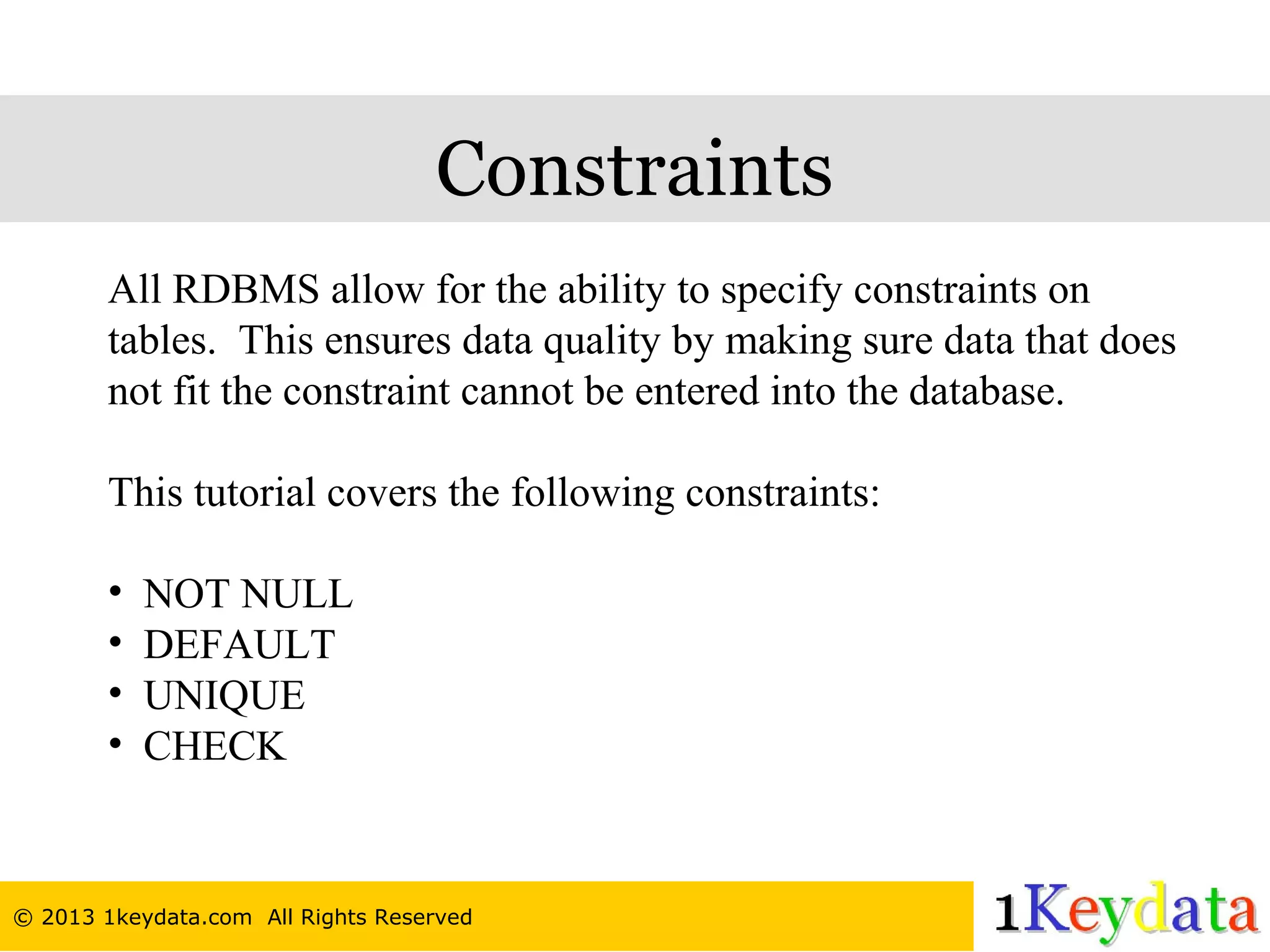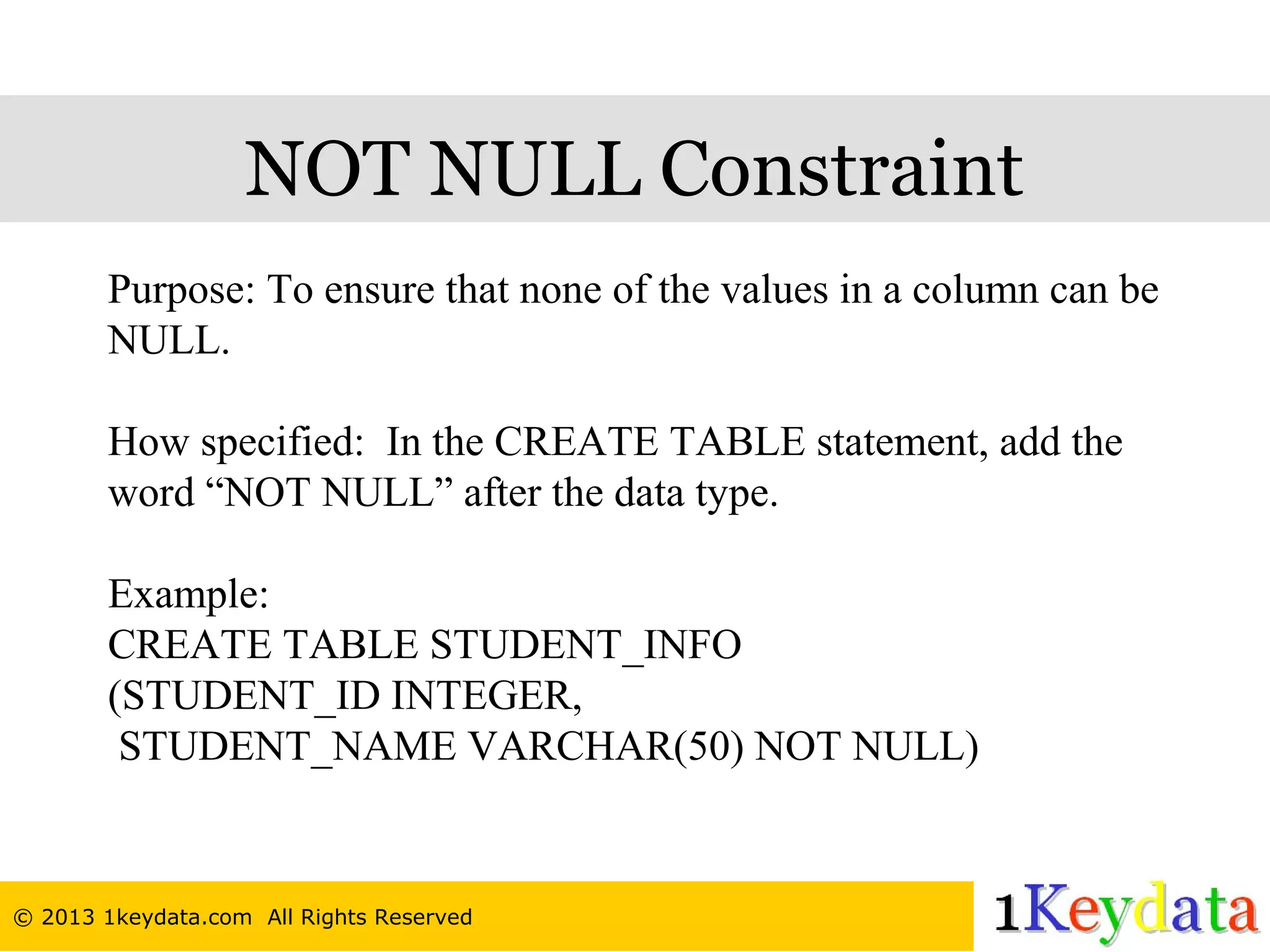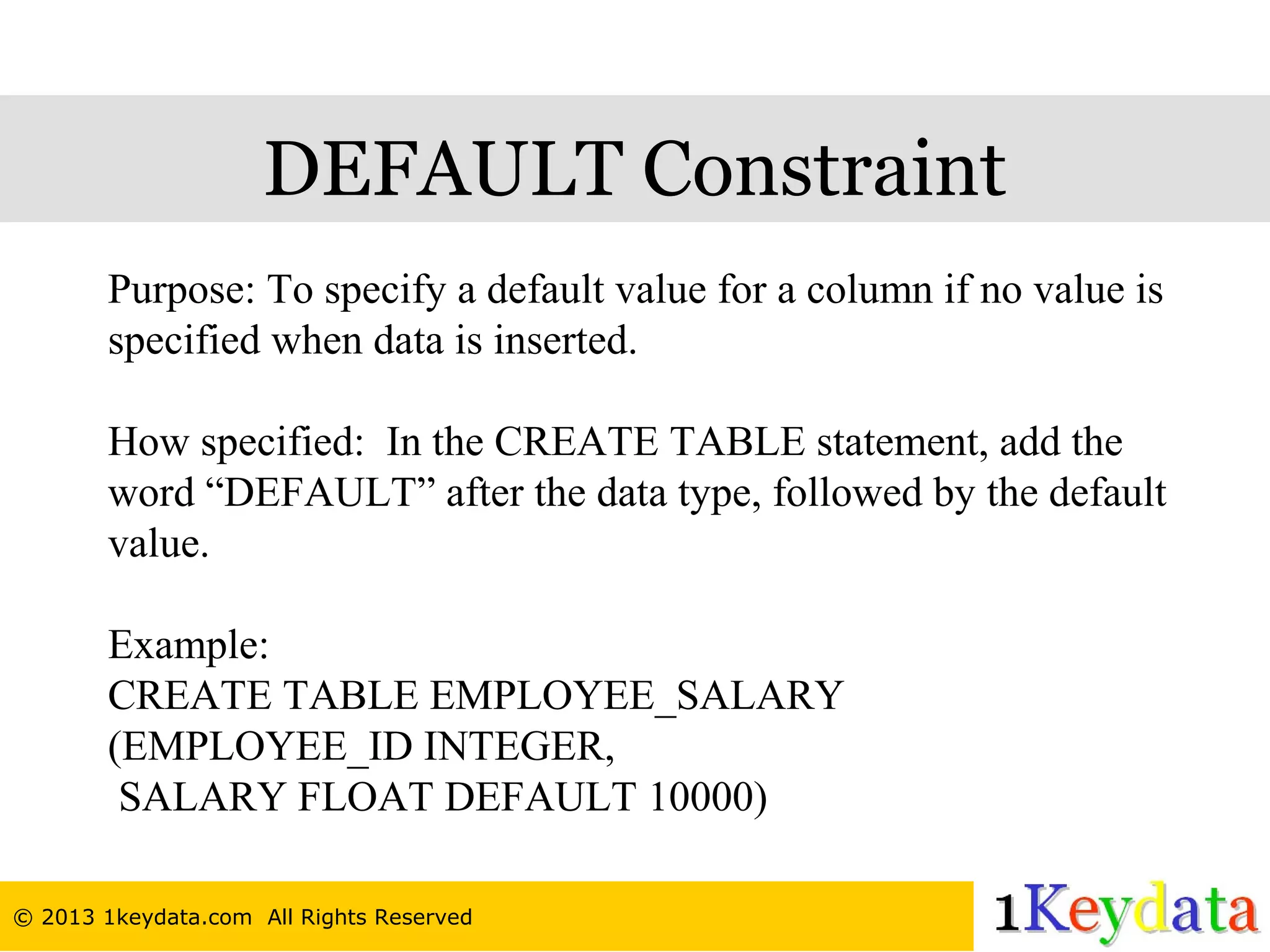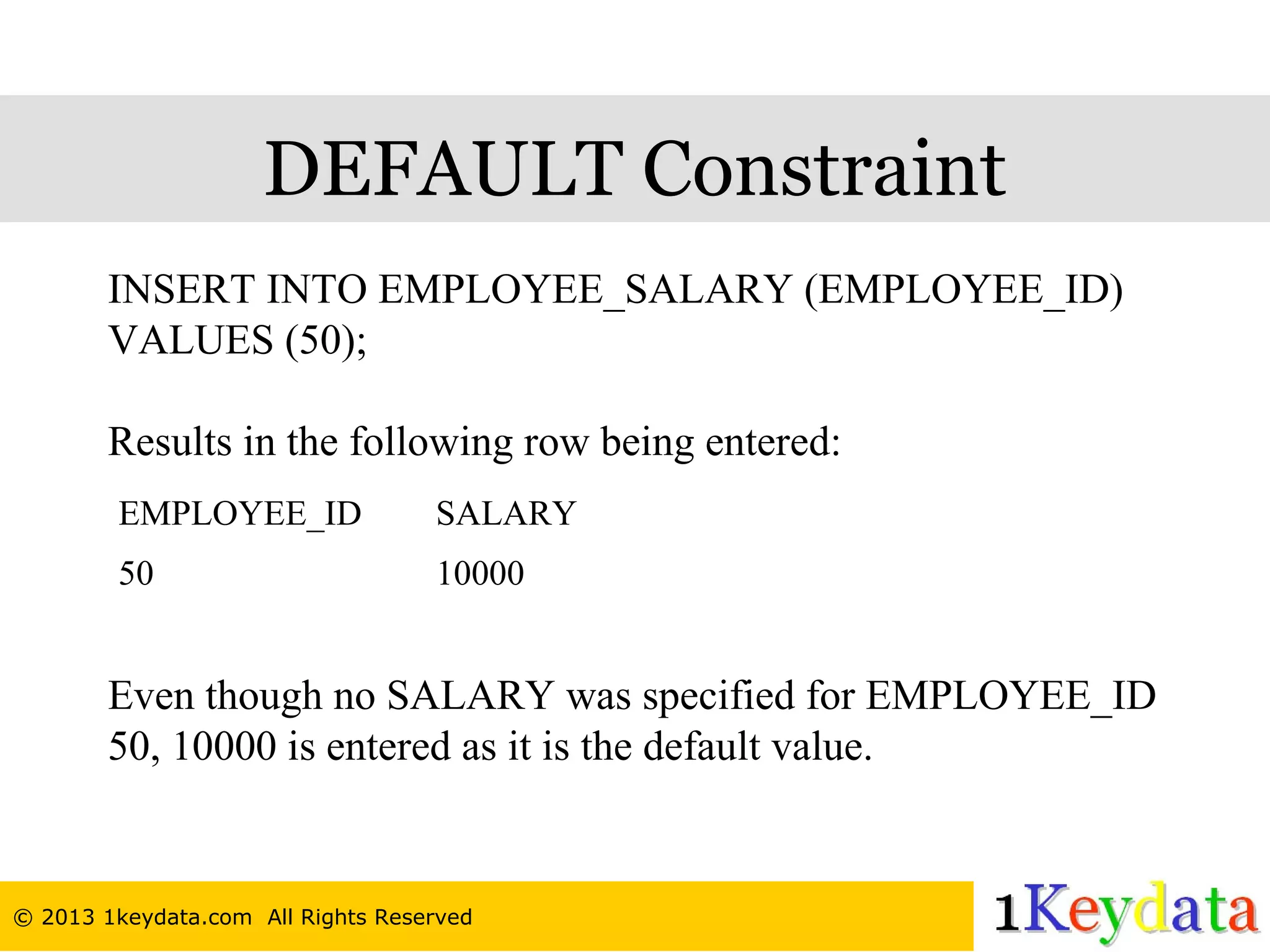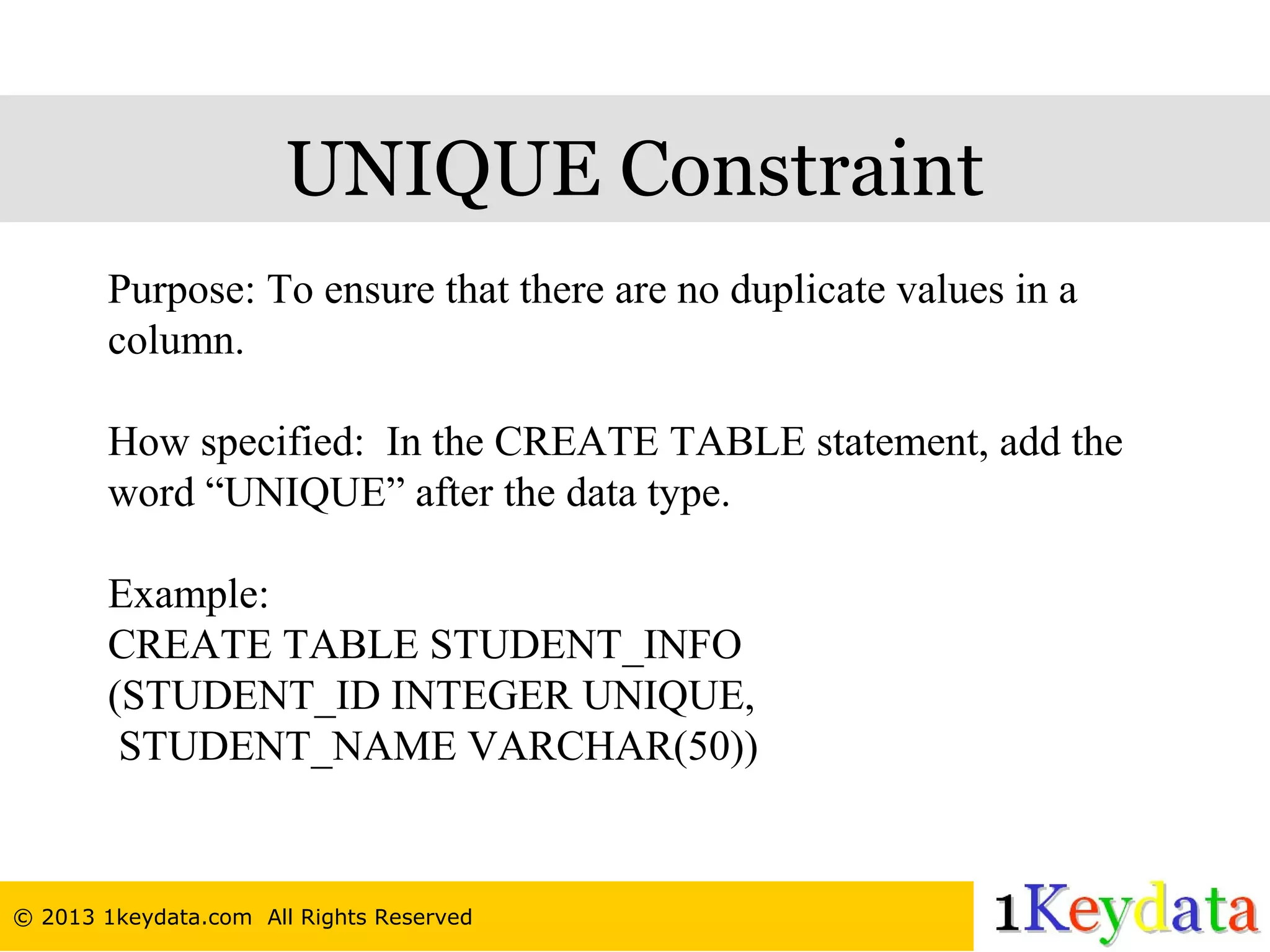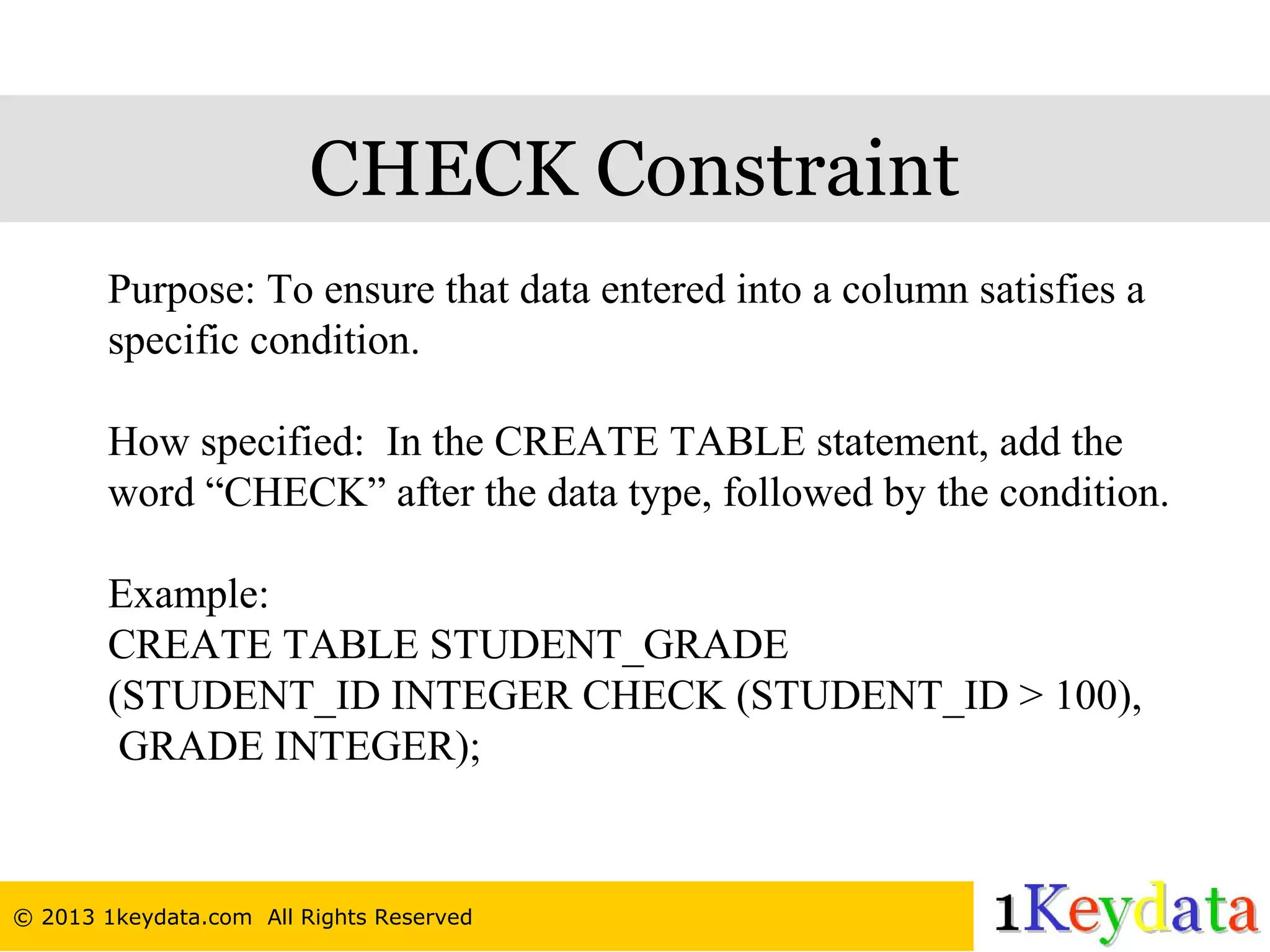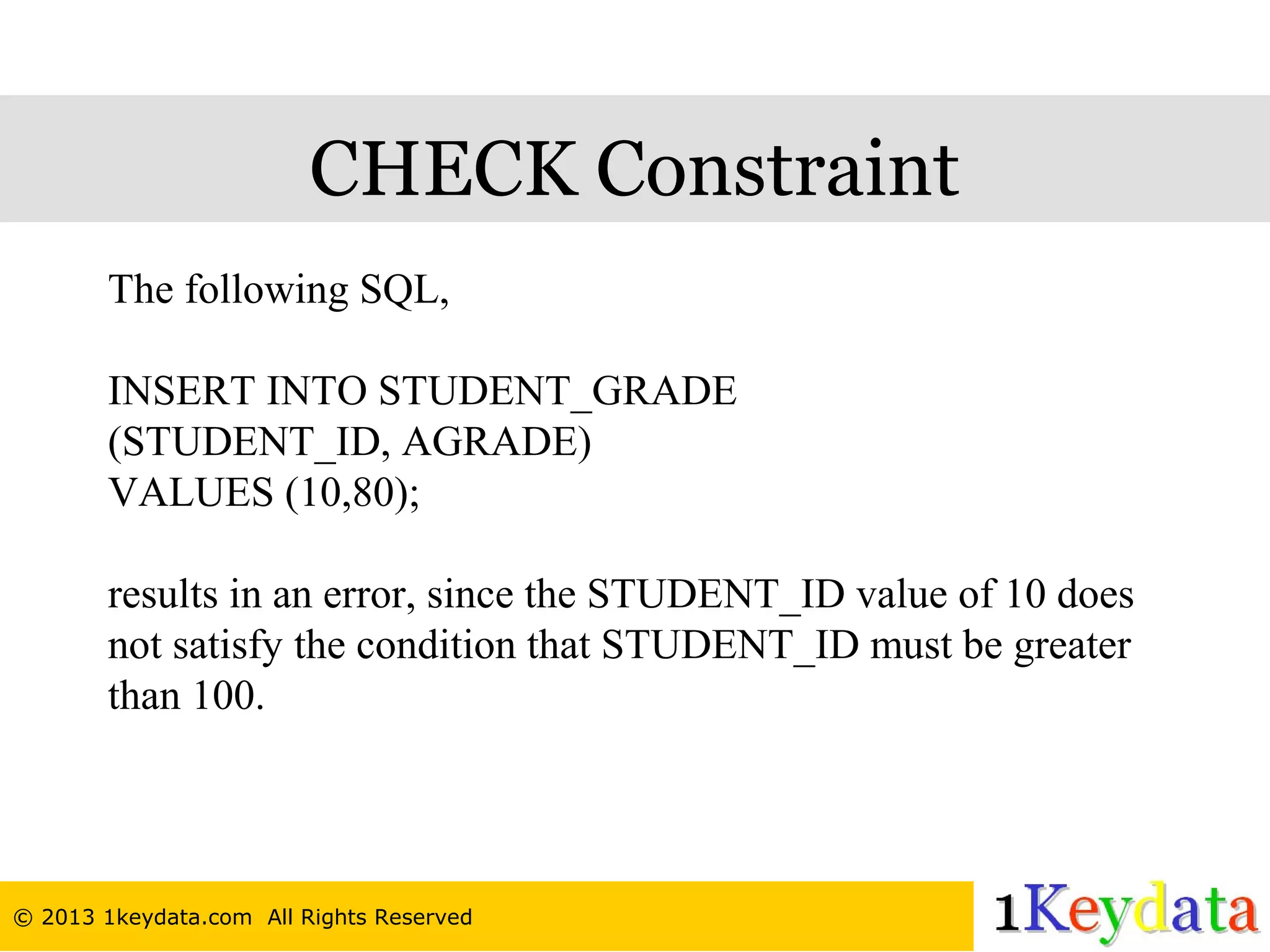This document discusses different types of table constraints in SQL: NOT NULL ensures columns cannot be null; DEFAULT specifies a default value if none is provided; UNIQUE prevents duplicate values; and CHECK ensures data satisfies a given condition, like values being above a minimum. Constraints are specified in the CREATE TABLE statement and ensure data quality by restricting what values can be inserted.

